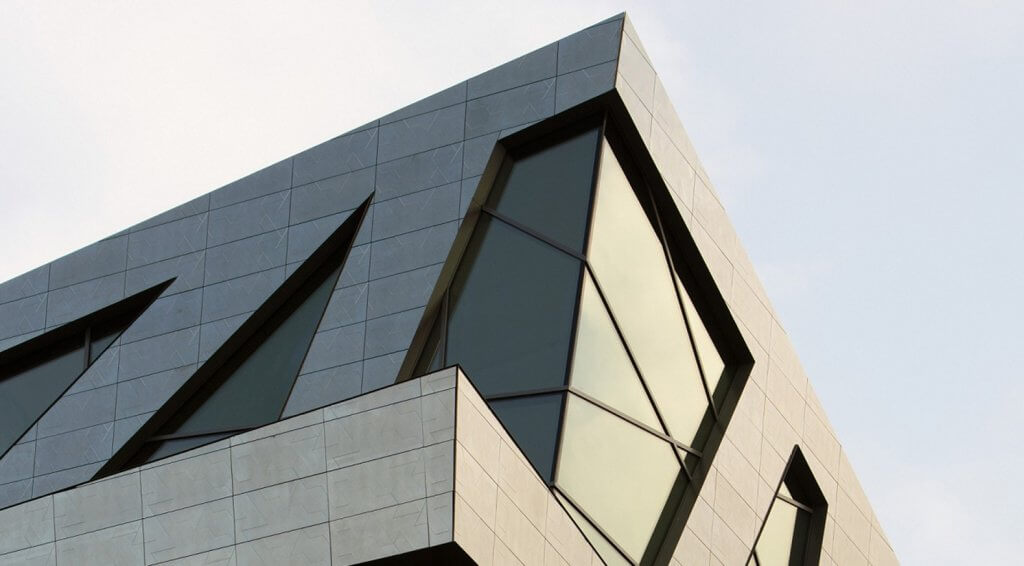Berlin building’s facade purifies the air
Daniel Libeskind’s Sapphire features geometric tiles coated in titanium dioxide, which breaks down dirt when exposed to the sun’s UV light, enabling the building to simultaneously clean itself and purify the air.
The specialised coating is the result of a collaboration between Japanese photocatalytic technology company TOTO and Italian tile manufacturer Casalgrande Padana. The tile is called Fractile, and is part of Casalgrande Padana’s growing catalogue of bioactive products.
A new trend: Bioactive products in architecture
According to Casalgrande Padana, “Bioactive ceramics for architectural applications are an innovative kind of environment-friendly product that can independently interface with the environment to create a number of virtuous processes, such as chemical and biological reactions that have an air pollutant reducing and antibacterial effect and trigger the self-cleaning of the surfaces, thus remarkably contributing to improving the quality of the (internal or external) micro-environment in which the ceramics are installed.”

Image: Sapphire
Fractile tiles measure about two by four feet. Of the 3,600 tiles, only 500 were made in a standard shape and size. The remaining tiles were custom-made using controlled linear and water jet cuts. The tiles were rotated and positioned to create reflective effects in the facade. Due to the specificity of this pattern, the arrival of the tiles took nine months and the installation took an additional four months.
In a style redolent of German Expressionism, Sapphire’s angular windows and oblique walls challenge conventions of perspective and proportion. Remarkably, the faceted mid-rise building successfully negotiates Berlin’s zoning codes, but not without effort: A parapet was needed to create a primary street-front volume and a secondary taller penthouse volume, for example.
The building also has to adhere to the 2013 EnEV energy code—one of the strictest in the world. According to the Global Buildings Performance Network (GBPN), “Germany has had prescriptive building energy efficiency requirements since 1977… policies encompass many progressive aspects including, low maximum u-values established relevant to climate, mandatory computer simulation, air-tightness requirements, well established incentive schemes, frequent boiler and HVAC testing, robust EPC programs, voluntary low energy classes, and a national target for carbon free buildings by 2020.”
Sapphire strategically designed to meet stringent energy code
The energy code limited the amount of possible glazing, therefore the building features high-performance triple-glazed windows and external louvers. Sapphire houses 73 one to four-bedroom apartments on a plot measuring less than half an acre, and units conform to a standard size. The building also boasts a rooftop green area.

